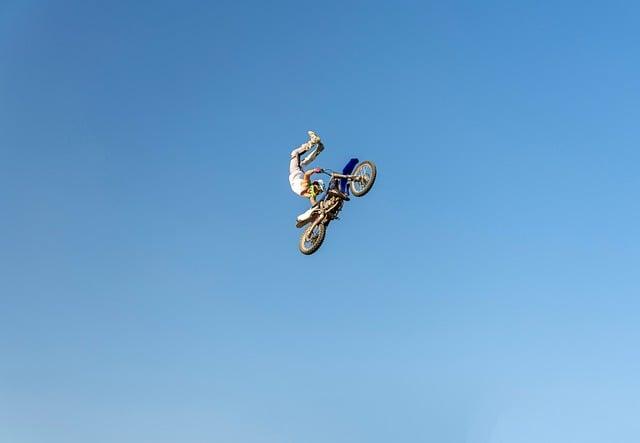In the realm of sports, where the hustle of competition meets the spirit of camaraderie, an unsettling truth often emerges: fairness is an elusive concept. While the thrill of the game—be it on a grassy pitch, a smooth court, or a shimmering pool—draws athletes and fans together, it simultaneously casts a shadow of inequality that can affect the very essence of play. In the letter featured in the Press Herald, this complex narrative is unpacked, shedding light on the intricate dynamics of fairness within the sporting world. Join us as we explore the multifaceted nature of sports, where talent, opportunity, and circumstance collide, revealing that the pursuit of glory might never offer a level playing field for all.
Exploring the Uneven Playing Field in Sports Dynamics
Sports, by its very nature, offers an array of opportunities for competition, celebration, and community. However, the landscape is often marred by factors that create an uneven playing field. Disparities in access to resources, coaching, and infrastructure can dictate who rises to the top and who is left struggling. Many athletes, especially those from underprivileged backgrounds, face systemic barriers that hinder their potential. For instance, while some communities may boast state-of-the-art facilities, others may have little more than a park with a worn-out basketball hoop.
This inequity is perpetuated by a cycle of funding and sponsorship that favors established programs and elite schools, effectively sidelining untapped talent in less affluent areas. A closer look reveals that the emphasis on winning often overshadows the mission of inclusivity and growth. Stakeholders involved in sports, from parents to policymakers, are increasingly called upon to rethink priorities and consider the broader implications of their support. Collaborations between local governments and sports organizations can make a significant difference, fostering environments where every child has a fair shot at pursuing their passion.
To illustrate the disparities, here are a few critical factors contributing to an uneven playing field:
| Factor | Impact |
|---|---|
| Facility Quality | Influences performance and safety |
| Access to Coaching | Guides skill development and strategy |
| Financial Support | Enables participation and travel |
| Community Engagement | Boosts morale and support networks |
Recognizing and addressing these disparities is essential for creating a sports culture that values every athlete equally. Only by fostering an atmosphere with equal opportunities can we hope to cultivate the next generation of diverse sporting heroes.
Understanding the Root Causes of Inequity in Athletic Competitions
The landscape of athletic competition is shaped by a myriad of factors that contribute to inequity, often obscured beneath the surface. Socioeconomic status plays a pivotal role, as access to resources such as coaching, nutrition, and training facilities can dramatically affect performance. Athletes from more affluent backgrounds frequently benefit from superior programs that enhance their skills from an early age. Conversely, those from underprivileged backgrounds may face barriers that discourage participation or limit their development, creating a chasm between competitors.
Another compelling aspect is cultural differences that influence participation rates in various sports. Certain communities may prioritize particular athletic pursuits based on historical success or cultural significance, leading to a disparity in representation across different sports. Additionally, the prevailing narrative around specific sports can deter talent from exploring alternatives, further entrenching inequity. As a result, neighborhoods and demographics often become associated with specific sports, which can perpetuate stereotypes and limit opportunities for aspiring athletes.
| Factor | Impact on Competitors |
|---|---|
| Socioeconomic Status | Access to better training and resources |
| Cultural Influence | Variations in participation and focus on sports |
| Gender Disparities | Unequal funding and opportunities across genders |
| Geographic Location | Access to facilities and competition opportunities |
Moreover, institutional barriers further deepen these divides. Policies and historical precedents within governing bodies can inadvertently reinforce inequity, resulting in uneven opportunities for athletes. Factors such as eligibility requirements, funding discrepancies, and support structures often favor well-established programs. Addressing these systemic issues requires a concerted effort from all stakeholders—sports organizations, policymakers, and communities alike—to foster an environment where all athletes have a fair chance to excel, regardless of their background.
Strategies for Promoting Fairness and Inclusivity in Sports
Creating an equitable playing field in sports requires a multifaceted approach that addresses systemic inequalities. Coaches and organizers can play a pivotal role by implementing training programs that emphasize diversity and respect. These programs should focus on awareness and understanding of cultural differences, helping athletes to recognize and mitigate biases, both on and off the field. Regular workshops and discussions can foster an environment that promotes respect and equality among teams.
Moreover, inclusive policies are essential in governing bodies and sports organizations. Ensuring representation in leadership positions is crucial; when diverse voices contribute to decision-making, the policies crafted are more likely to resonate with various demographics. Organizations should consider initiatives such as:
- Establishing mentorship programs
- Creating scholarships for underrepresented groups
- Designing outreach programs that invite participation from diverse communities
supporting female and marginalized athletes is imperative for fostering inclusivity. Providing equal access to facilities, training, and funding can drastically alter the landscape of sports. Celebrating diversity through events like “Diversity Days” and promoting stories of underrepresented athletes can inspire the next generation. Additionally, creating feedback mechanisms where athletes can voice concerns or share experiences helps organizations remain accountable and continuously improve.
The Role of Community Engagement in Addressing Sports Disparities
Community engagement plays a vital role in bridging the gap of disparities found in the realm of sports. When local organizations, schools, and families collaborate, they create an inclusive framework that supports athletes from diverse backgrounds. The establishment of community leagues and accessible programs helps dismantle barriers that hinder participation. These initiatives not only foster talent but also build a sense of belonging among participants. By working together, communities can amplify their voices, ensuring that resources are allocated equitably across all demographics.
Furthermore, community-driven advocacy can influence policy changes that promote equity in sports. Local activism can lead to improved facilities, more funding for underrepresented sports, and better access to training programs. Engaging stakeholders—parents, coaches, athletes, and local businesses—in discussions about sports infrastructure can catalyze significant shifts in how resources are distributed. Effective community engagement revolves around understanding distinct needs and leveraging collective efforts to address them. This encourages a culture of inclusivity where every athlete feels valued.
To illustrate the positive effects of community engagement, consider the following table highlighting successful initiatives:
| Initiative | Description | Impact |
|---|---|---|
| Local Sports Clinics | Free training sessions for youth in underserved neighborhoods. | Increased participation by 40% among at-risk youth. |
| Community Fundraising Events | Annual events to raise awareness and funds for local sports teams. | Enhanced funding for team uniforms and equipment. |
| Inclusive Team Programs | Sports teams that welcome players of all skill levels and backgrounds. | Fostered a sense of community and collaboration. |
By empowering individuals to actively participate in the sports community, we can create a more equitable environment for all athletes. This involves not just recognition of disparities but also a commitment to action through sustained community engagement. Ultimately, when everyone is involved in shaping their sports environment, it lays the groundwork for a future where equity is not just a goal but a reality.
The Conclusion
the landscape of sports is a complex tapestry woven with threads of competition, skill, and, often, disparity. While the ideal of equality and fairness resonates deeply within the hearts of athletes and fans alike, the reality is that not every player steps onto the field with the same advantages. From socioeconomic status and access to resources to inherent physical attributes, numerous factors shape each athlete’s journey, often influencing their chances of success. As we reflect on the sentiments expressed in the Press Herald letter, it’s crucial to recognize that while sports may strive for fairness, the genuine spirit of competition lies in the resilience, passion, and determination that each participant brings to the game. Understanding this complexity encourages deeper conversations about equity in sports and inspires us to foster environments where all athletes can find their own paths to greatness, even amidst the inherent imbalances.
